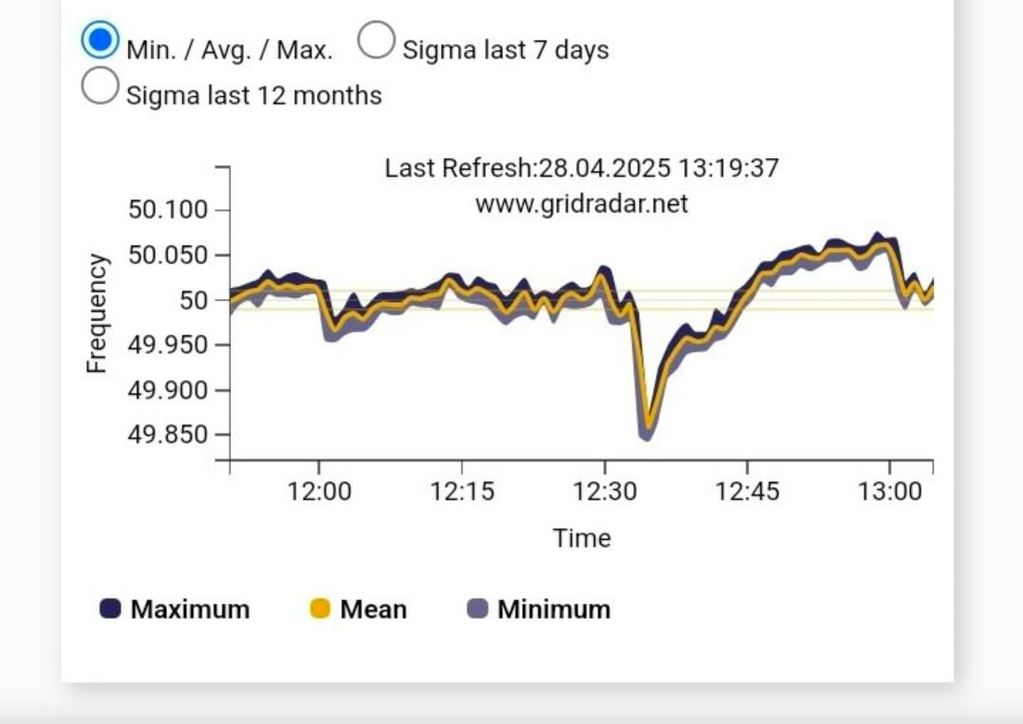
A widespread blackout affecting Spain, Portugal, France, and Belgium has reignited fierce debate over Europe’s rapid transition to renewable energy — and what critics say are serious vulnerabilities in the continent’s Net Zero energy infrastructure.
On Monday, Spain and Portugal experienced a massive and sudden power failure, with Spain reportedly losing around 60% of its electricity supply in just five seconds. France and Belgium were also hit, causing disruptions to transit, communications, and daily life.
Embarrassed officials initially pushed excuses for the blackouts including a rare atmospheric event or cyberattack, but both have now been ruled out. Early investigations indicate the trigger was a rapid and unexpected drop in solar energy generation in southwestern Spain — a region that heavily relies on renewables.

BYPASS THE CENSORS
Sign up to get unfiltered news delivered straight to your inbox.
You can unsubscribe any time. By subscribing you agree to our Terms of Use
While many European leaders continue to champion “Net Zero” targets, energy researchers and independent analysts are raising red flags.
Klaus Schwab’s Daughter Confesses: ‘WEF Plans to Murder Billions of People’
Journalist and energy policy expert Michael Shellenberger called the event a “near miss” — warning that Europe was “seconds away” from a continent-wide blackout. In a viral social media thread, he argued that the blackout highlights the dangers of over-reliance on intermittent energy sources like wind and solar, especially without sufficient baseload backup.
This is truly bananas: all of Europe appears to have been seconds away a continent-wide blackout.
The grid frequency across continental Europe plunged to 49.85 hertz — just a hair above the red-line collapse threshold.
The normal operating frequency for Europe’s power grid is 50.00 Hz, kept with an extremely tight margin of ±0.1 Hz. Anything outside ±0.2 Hz triggers major emergency actions.
If the frequency had fallen just another 0.3 Hz — below 49.5 Hz — Europe could have suffered a system-wide cascading blackout.
At that threshold, automatic protective relays disconnect major power plants, and collapse accelerates.
And it’s disturbingly easy to imagine multiple scenarios where that could have occurred…

Renewables don’t risk blackouts, said the media. But they did and they do. The physics are simple. And now, as blackouts in Spain strand people in elevators, jam traffic, and ground flights, it’s clear that too little “inertia” due to excess solar resulted in system collapse.
You can read Michael’s entire piece here.
As we mentioned earlier, it’s becoming clear to many that green energy played a major — if not the leading — role in the power outage. The EU’s shift from cheap, effective coal is likely straining the system.
Spain, one of the EU’s green energy leaders, was sourcing 100% of its electricity from renewables at the time of the outage. That number is seen by some as a badge of honor — and by others, as a potential Achilles’ heel.
“These systems work great until they don’t,” said one grid engineer who asked not to be named. “The problem is, there’s little room for error. If one element fails, it can cascade — fast.”
In the wake of the blackout, new Canadian Prime Minister Mark Carney has doubled down on similar Net Zero goals.
But critics argue that unless Western nations pair clean energy growth with robust grid resilience strategies, the public will continue to bear the brunt of an overly ambitious energy experiment.
While governments have downplayed the long-term implications of the outage, some skeptics are asking hard questions: If a momentary solar shortfall can trigger such widespread instability, how secure is Europe’s green future?
